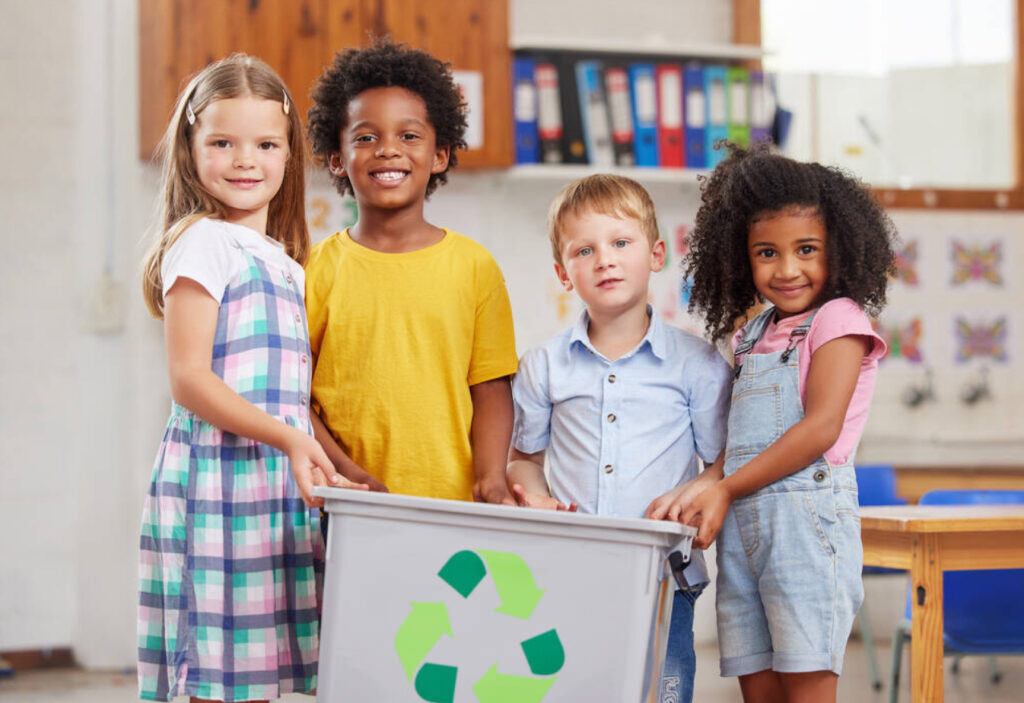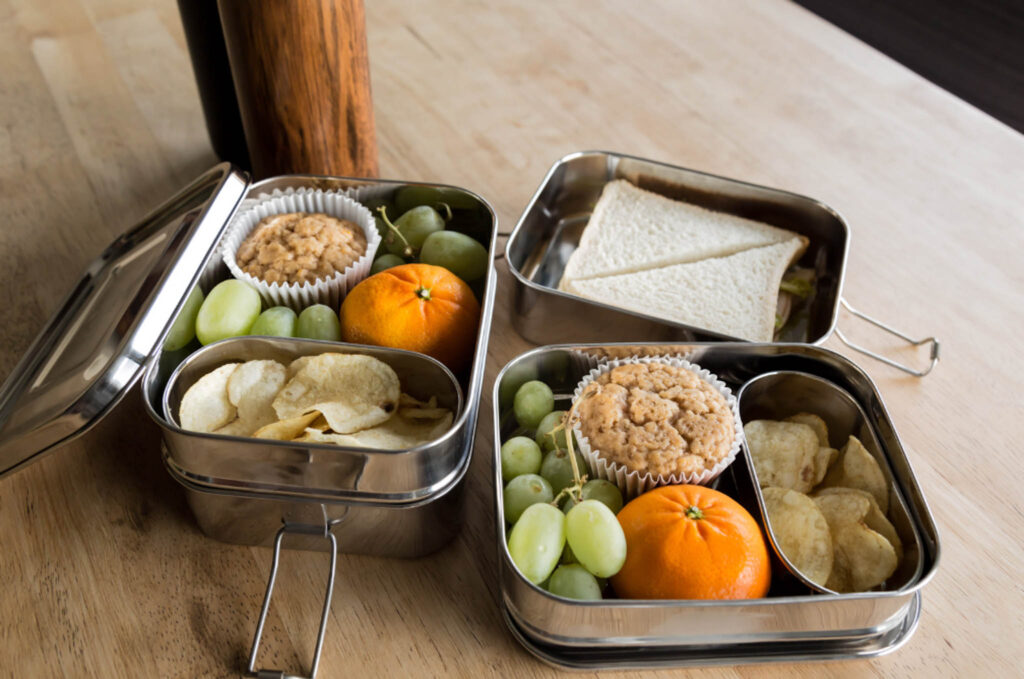Sustainable Classroom Ideas: Tips for a Green Classroom
Estimated reading time: 13 minutes
As a former teacher, I know that over the summer, you start to think about all the things you could do better for the next school year. Make it your goal to create a more environmentally friendly classroom this year. While other teachers may focus on curriculum, classroom management, pedagogy (and the list goes on), dare I say encouraging more sustainable living might be more important?
Now is the time to go green in your class, which means more than just buying green products. I’ve compiled some reasonably easy-to-implement eco-friendly classroom practices and procedures for you to try this year. Please join me in my quest to educate others about the need for sustainability at work and school!
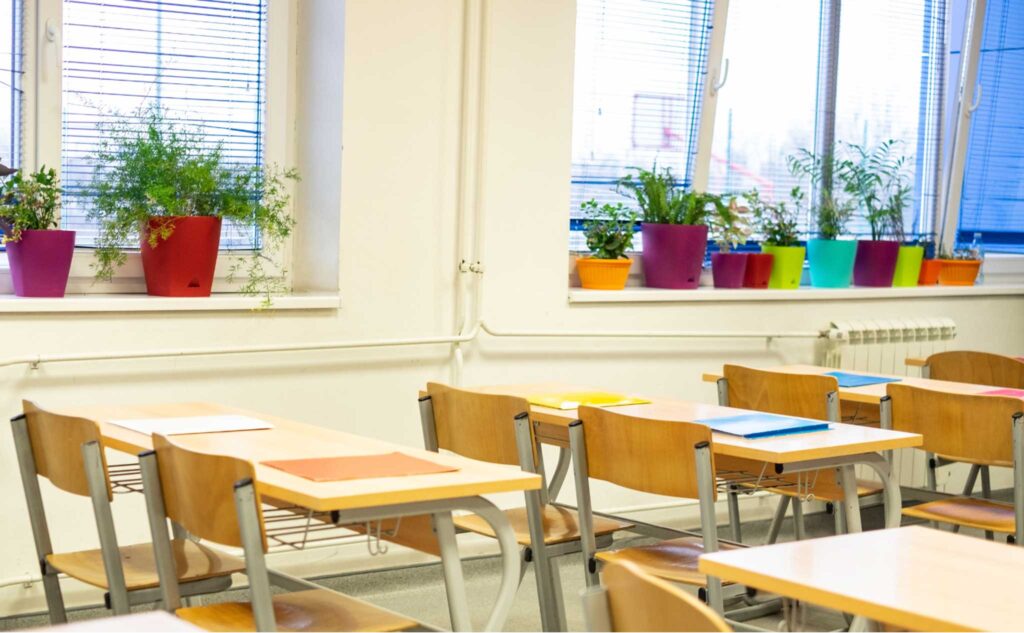
key takeaways
- Creating a sustainable classroom can begin before the students arrive by sourcing eco-friendly furniture, supplies, and decorations, designing your space, and setting up your recycling, compost, and upcycling bins!
- Once the students have arrived, you will want to teach them about sustainability, lead by example, focus on energy efficiency, and gather student ideas for a more sustainable classroom or school.
- You don’t need to do this alone! Get the parents and community involved too.
- Last, but certainly not least, don’t forget to celebrate and encourage students!
Before the School Year Begins
Eco-Friendly Furniture
Your administration will likely be in charge of furniture purchases for the whole school, but that shouldn’t stop you from pitching more sustainable companies to them for future needs! One such manufacturer is Natural Pod, whose furniture is all North American, made from FSC Certified wood, and has no harmful off-gassing.
If given a classroom budget, you could find fabulous second-hand pieces at garage sales or thrift stores to add exciting and functional furniture to your classroom. I brought my family’s old wood and wicker rocking chair to my classroom, and the kids loved taking turns reading in it!
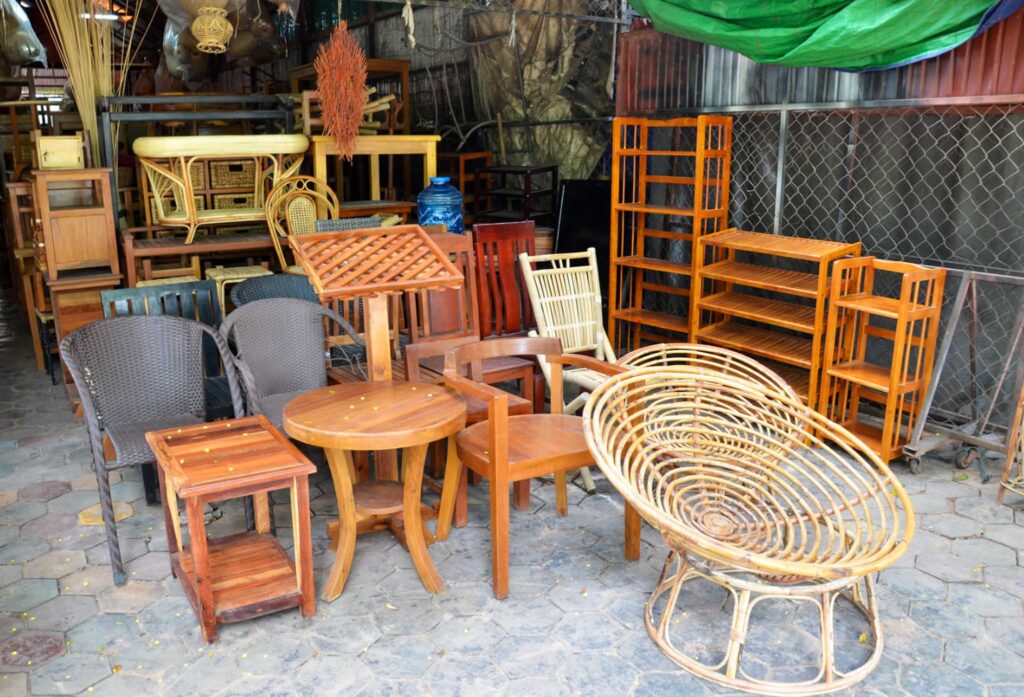
Environmentally Friendly Supplies
Just as the furniture goes, if you’re not in charge of the supply cupboard at your school, suggest some sustainable school supply brands to whoever is! You could check out the eco-friendly school supplies at Earth Hero, a Certified B Corp company that prioritizes organically grown materials and ingredients.
Make it a habit of collecting “lost” supplies in the hallways, corners of the classroom, and behind bookshelves, and give them a second life before breaking out new supplies. Store them in an old coffee tin or jar for bonus eco-points! Please encourage students to take care of their sustainable school supplies so they last longer.
Green Classroom Design for a sustainable space
While the number of students in a class is growing, and the space is not, my classroom setup felt like an obstacle course for maneuvering. When designing the layout of your environmentally conscious learning space, keep the following in mind.
Students can face different directions. Wall space can be made useful with hooks and floating shelves. Get creative – is there a way to use countertops or small bookshelves as workspaces? Can you hang baskets of supplies or plants from the ceiling?
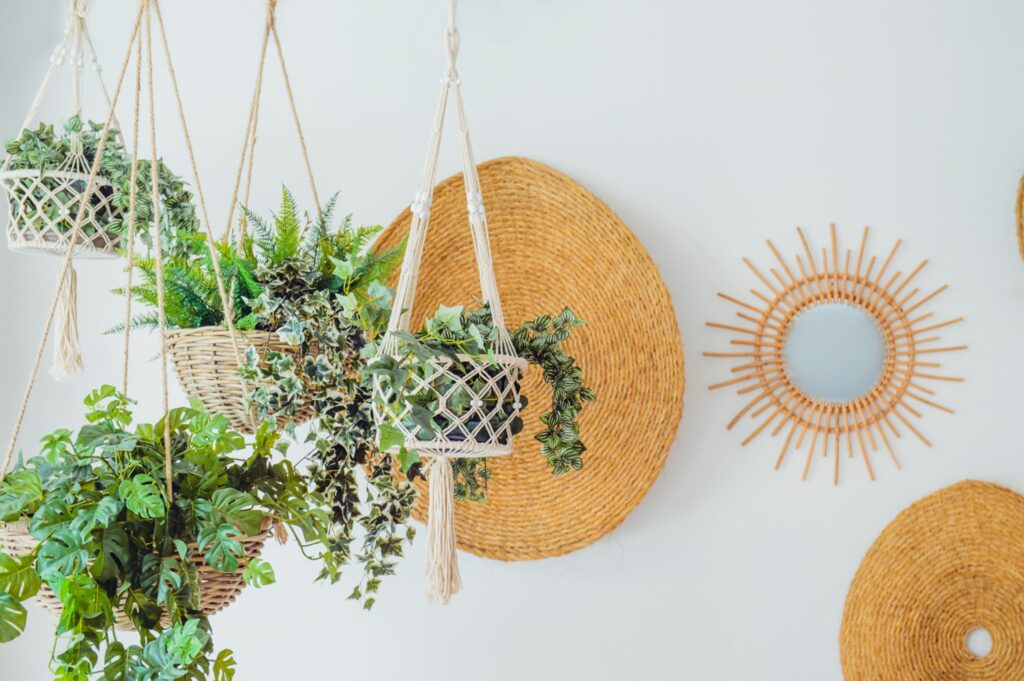
Green Decorating for a sustainable classroom
Speaking of plants, nothing says green classroom design like indoor plants. Incorporate nature into your classroom environment not only to improve air quality – studies show that plants can help reduce stress and increase focus. You can even make it a classroom sustainability project with students to grow off-shoots and propagations of your plants using plastic bottles or other materials from the recycling bins. Some good choices that propagate well are golden pothos, spiderwort, and English Ivy.
Aside from the greenery, keep quality over quantity in mind when decorating your classroom. Make sure that what you display on the walls is truly functional, educational, or inspiring. Try using thrifted fabric as a backing on your class bulletin board rather than paper that often needs to be replaced. Every little action adds up!
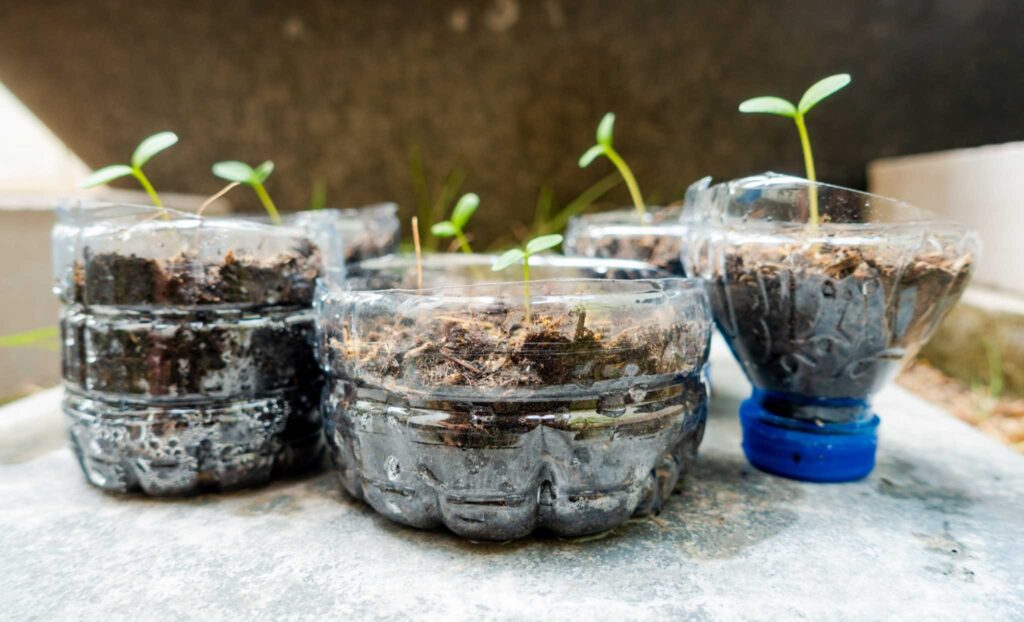
Food Waste and Compost
My goodness, do kids ever waste food when left unattended at lunchtime! I’ve heard every reason for throwing parts of their lunch into the trash, from “I don’t like tomatoes” to “I wasn’t hungry anymore.” Aside from teaching kids the importance of not wasting food (more on that later), some more things can be done to waste reduction in school.
If your school doesn’t have a compost bin outside, make it a personal goal or class project to obtain or build one. That’s the hardest part. Now, get your hands on a five-gallon bucket for your class and teach students which food scraps are compostable and which are not. Make a schedule for kids to go and empty the bucket in the bin as often as needed. You can then use the compost created for a school garden where you might grow your own food.
Another way to make school meals more sustainable is to encourage reusable containers and avoid food packaged in single-use, disposable wrapping.
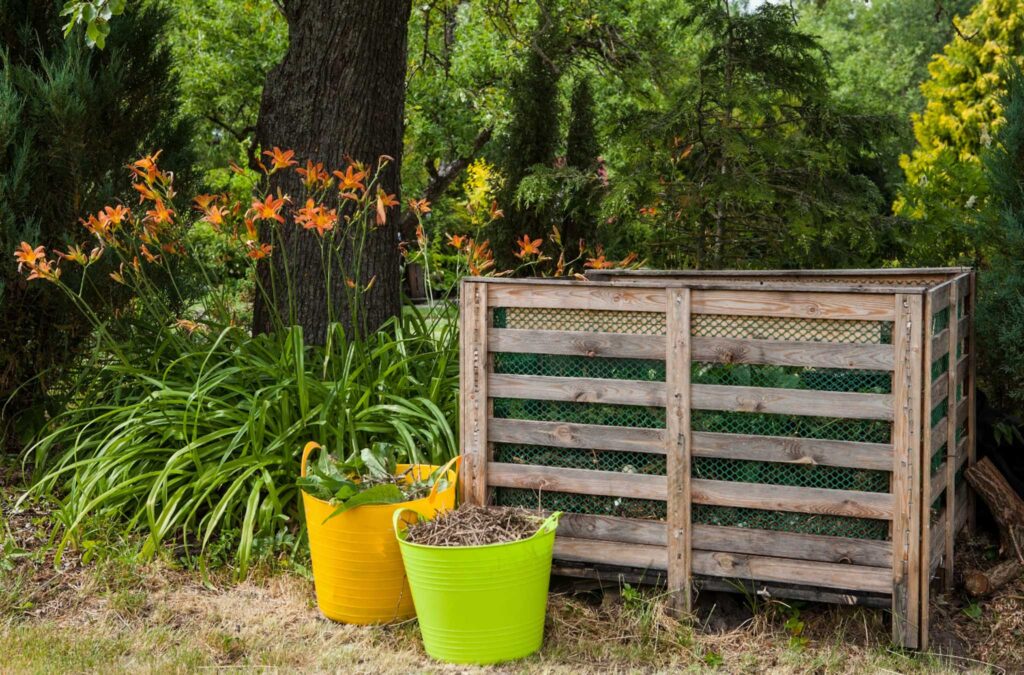
Up-Cycle Bin for waste-free school activities
I don’t know about you, but the things I would find in the garbage bin in my classroom at the end of the day were enraging. What appeared to be perfectly fine pens, pencils, erasers, paper, yogurt containers, you name it; it was in there.
When I started getting into up-cycling myself, I thought of this idea. An Up-Cycle bin for the classroom! If it’s not biodegradable food waste, the next question to have kids ask themselves is, “can it be used again in a different way?” If the answer is yes, it’s destined for the Up-Bin. From dried-up markers to plastic bottles, broken rulers, or scrap paper, this is the bin of materials destined for a second life cycle.
Find creative ways to use the items again in a fun way in the classroom. They could be incorporated into games, science or art projects, or used to make up-cycled gifts. At the end of the year, have kids put any supplies they think they’ll throw away in the bin to be used again next year.
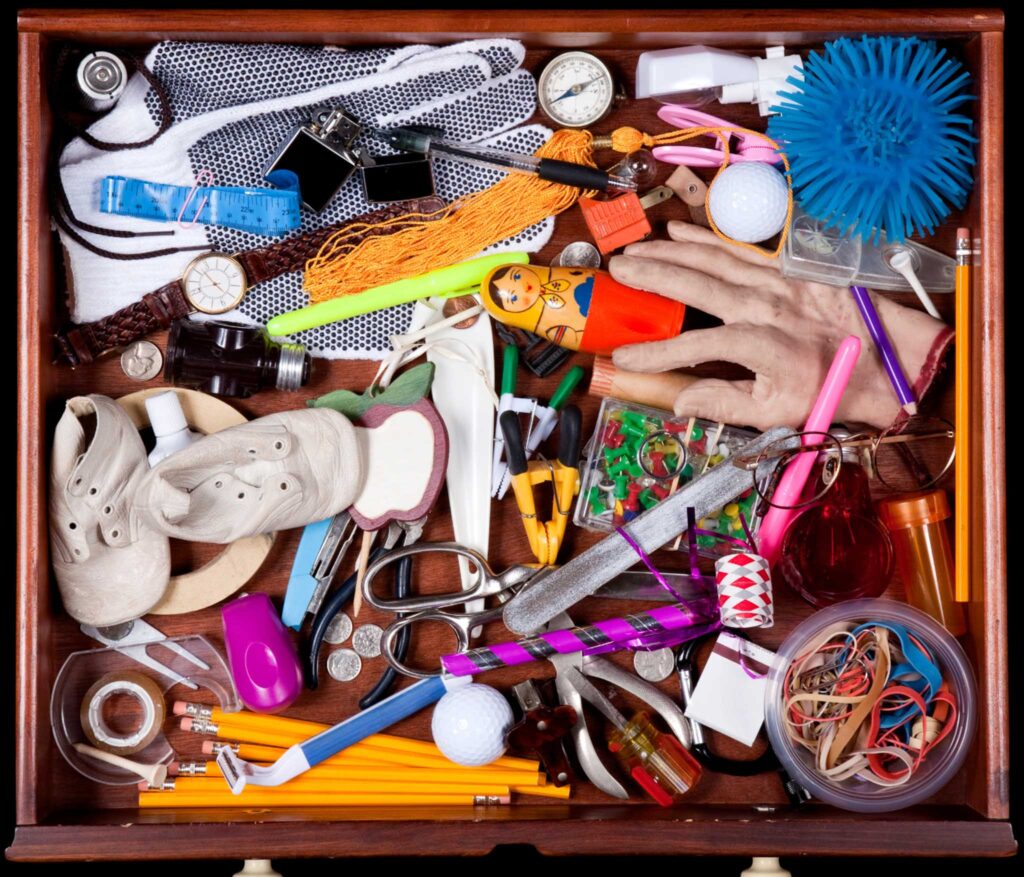
Recycling Station in your sustainable classroom
The next stop for classroom waste is the recycling bins. If there is no way the items can be composted or up-cycled, teach students how to determine if they can be recycled in your area and how to choose the right bin for it (if it requires sorting.) Don’t forget that the recycling bins can also provide a fantastic supply of items to be reused or reimagined into something else for your classroom! Consider the other many other Rs of sustainability before recycling!
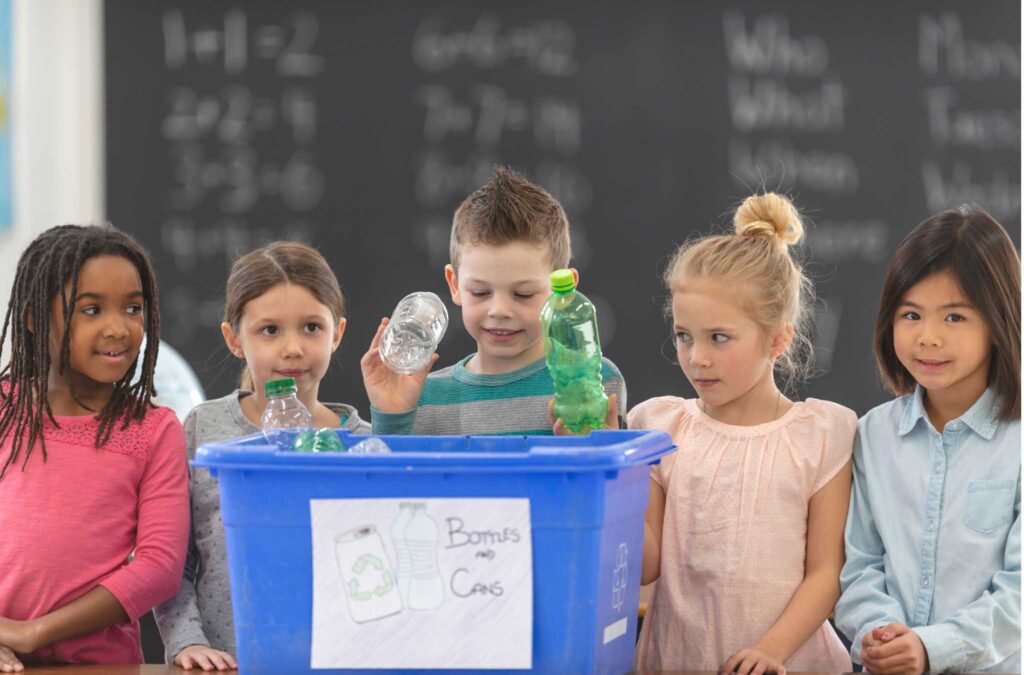
Sign up for some of TerraCycle’s School Recycling Programs to earn points your school can redeem for cash!
Make it a Challenge
At the end of each day or week, take note of which bin (the up-cycle, recycle, or garbage) is the most full. If you’re composting, recycling, and up-cycling well, the trash should be nearly empty! You could add some incentive by awarding outdoor or reading time when the students have done an excellent job.

When the Students Arrive to your sustainable classroom
green Teaching Strategies
It’s no secret that we are experiencing the drastic effects of climate change. Without teaching kids to care about future generations, we’ll face more significant problems than covering all the curricular outcomes in one school year (ha!) Environmental education is paramount, but let’s remember that sustainability contains three pillars. It should be of equal importance that we teach students about human rights, social justice, and the need for economic stability.
Create eco-conscious lesson plans that make it clear to students that sustainability crosses all curricular subjects. If possible, acquire guest speakers from relevant fields to come and talk to your class or set up a zoom call. Take children on field trips to recycling centers, to volunteer in the community, or to other locations linked to sustainability. Teach kids that they can make a difference and that future generations are counting on us to live sustainably. A great place to start is with the UN’s Sustainable Development Goals.
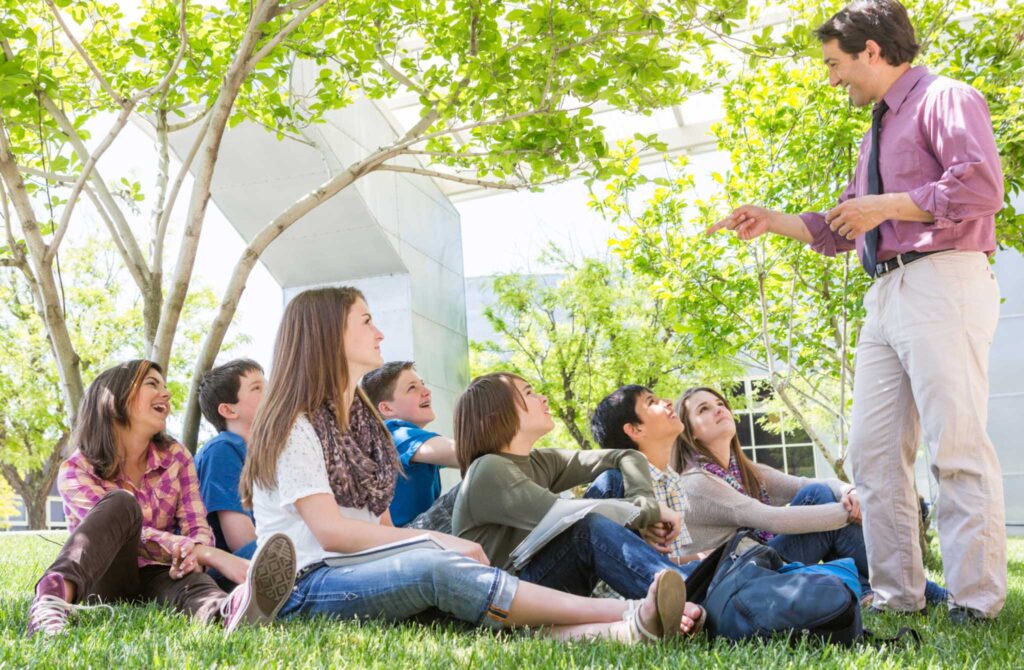
Lead By Example
Teachers are all too familiar with the phrase “practice what you preach.” If you’ve gone to the effort of making your class more eco-friendly, then you must be passionate about the environment. Let that show through to your students. As a new teacher, I shied away from sharing too many personal aspects of my life but later realized that this helps form genuine relationships and can inspire kids to learn.
One such way I connected with students was by sharing stories about my environmentally friendly commute to work, biking or running. I often opted for this form of transportation for my 12 kilometre (7.5 miles) journey. Kids would see me on their way somewhere after school and wave as they passed by, riding their own bikes. I also liked to share what I was reading with my students, as it almost always had something to do with the environment or outdoor recreation.
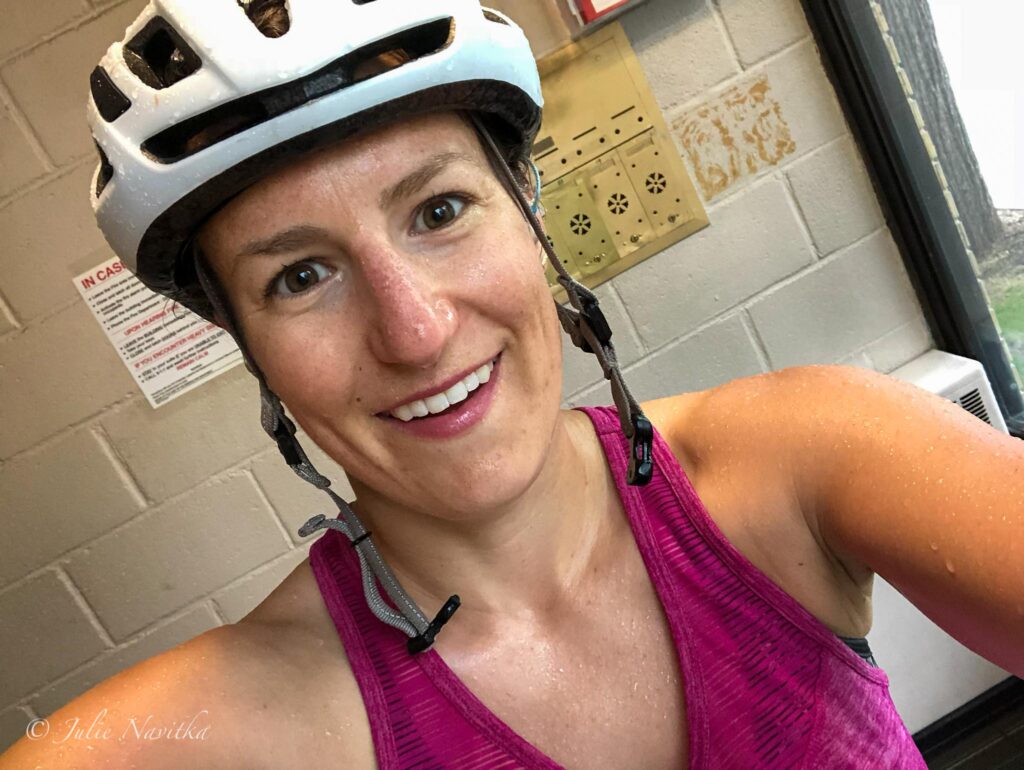
Find ways to connect with your students in this area, and they are more likely to be inspired to follow in your sustainable footsteps.
Energy Efficient sustainable Classrooms
You may have little control over the energy use in your school, but there are some things you can do in your classroom for more energy-efficient lighting and to reduce energy use overall.
Conduct an energy audit with your students to help them determine how much energy is used in the classroom. Brainstorm ways to minimize your energy consumption to be more environmentally friendly. Some might be to use natural light from the window, replace lights with more energy-efficient ones, unplug electronics when not in use, and keep the thermostat a little cooler or warmer depending on the season.
The bonus is that sunlight is proven to increase mood and strengthen the immune system – so shut off those glaring classroom lights and reduce your classroom carbon footprint!
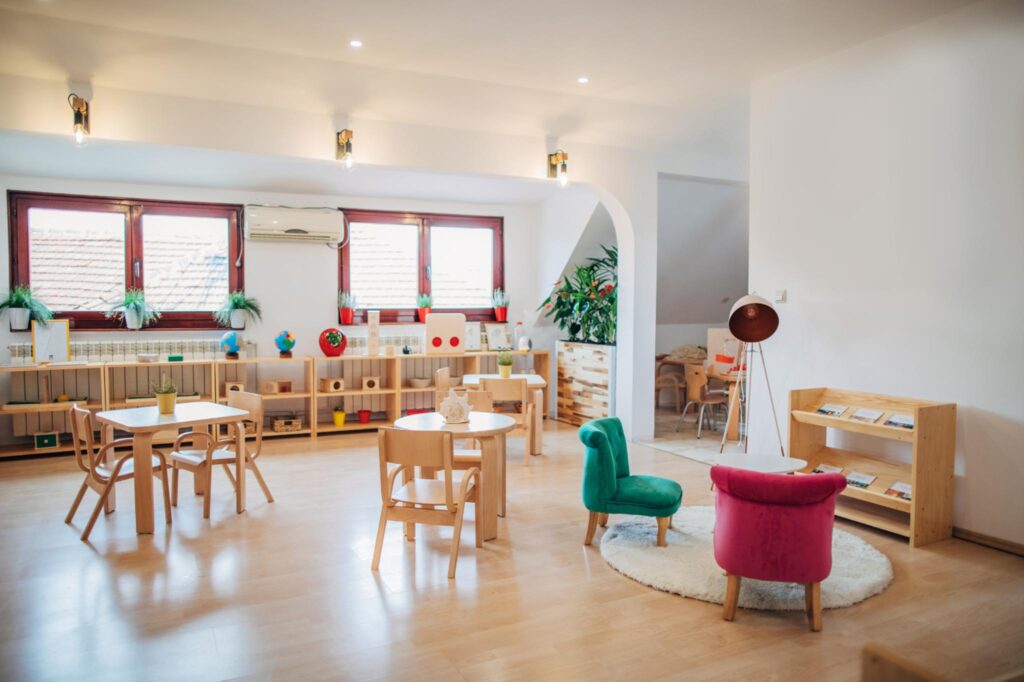
Student Ideas for a green classroom
Now that you have the students involved, get some creative ideas from them about how to make your class more friendly to the environment. Most students will come up with excellent innovative suggestions, and the conversation will undoubtedly lead to more talk about the importance of sustainable living.
They may even think of some student-led environmental initiatives to make the entire school and school grounds more sustainable, and for that, you may need to get some others involved!
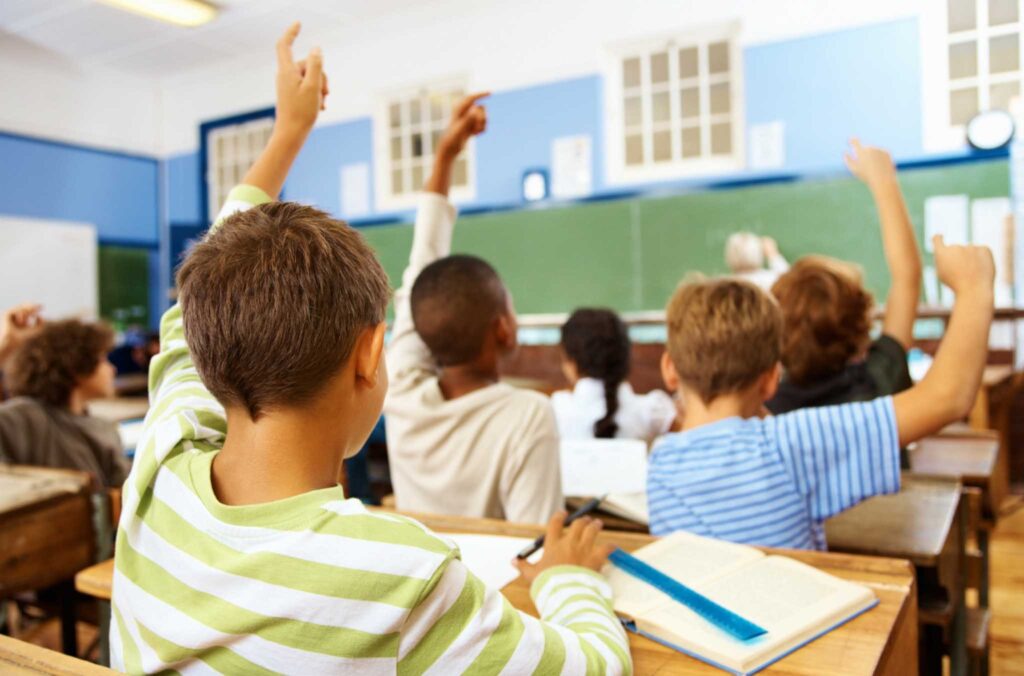
Get Parents and the Community Involved
Outdoor and environmental education starts at home, and green teaching strategies for our own children about sustainability should be no different. Contact your student’s parents and fill them in on your class’s efforts to be more green. Ask them to have conversations with their kids about the issues around sustainable development and encourage them to get on board. Request that they pack litter-less lunches using eco-friendly lunch boxes and reusable containers. Let them know how much food is wasted at lunchtime, and they can speak with their children to come up with ideas of how they can curb this behavior.
When parents and teachers work together, kids are more likely to understand the importance of an issue.
Involving other teachers, administration, parents, and the community can help you achieve larger sustainability goals for both your classroom and your school. You or your admin could apply for environmental or sustainability grants. Parents could help organize fundraisers to help you create a school garden or purchase solar panels. You could ask the community to donate unused items from their households that might be useful to you in the classroom or for a larger eco-friendly school-wide project. Getting others involved may just inspire them to create a more sustainable home!
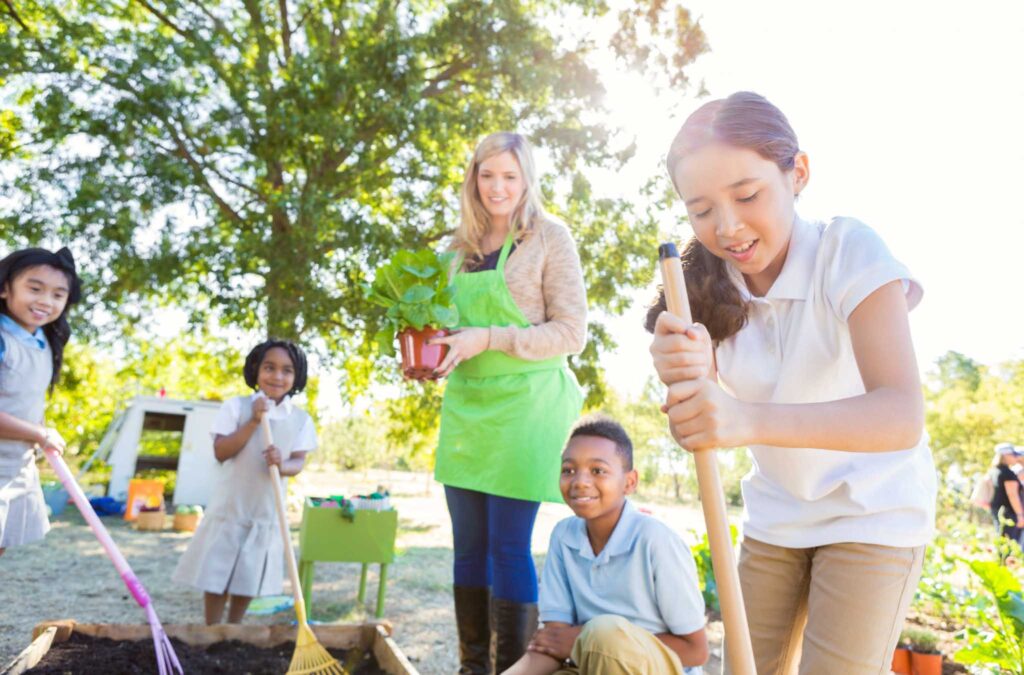
Encourage & Celebrate Students
Last but certainly not least, encourage kids often to be more sustainable in their own lives out of school. If they want to start a Green Club, help make it happen. Provide them with the resources and information needed if they desire to convince their friends and family to be more eco-friendly. Make sure you celebrate when students are successful in their sustainability journey – from walking to school to being mindful of their resource use in the classroom.
Final Thoughts about creating a sustainable classroom
My best advice is to start small. Even if you choose just a few of these sustainable education initiatives to incorporate into your classroom next year, you’ll be making a more significant difference than you know! An additional bonus is that in making your classroom more sustainable, you are also creating a more sustainable workplace for yourself, which positively affects your mental health!
Whether your goal is to achieve a zero-waste classroom or to guide your students toward more sustainable living, you can feel good about your actions. If even ten percent of your students carry over some of the practices you teach them into their own lives, you’ve increased your positive environmental impact tenfold!
Remember, every journey starts with just one step – but if we add all the steps of all the students you inspire, that’s a long-distance win!


